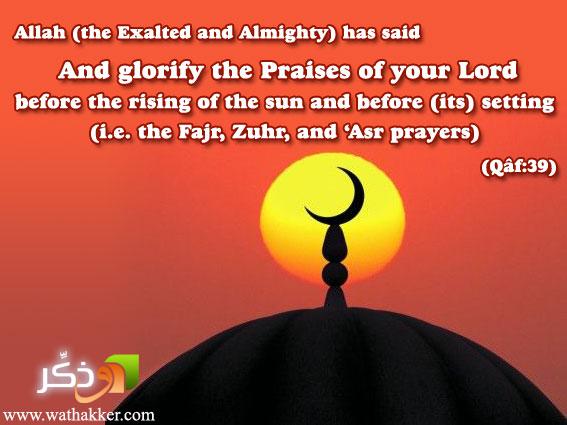In the heart of the bustling world, where the cacophony of modern life often drowns the whispers of the soul, there exists a serene oasis of spirituality known as meditation/” title=”Sufi Mysticism: Tracing the Roots of Meditation”>Sufism. This mystical dimension of Islam, often shrouded in the delicate veils of poetry and music, invites seekers on a journey inward, toward the divine essence that connects all creation. At the core of this spiritual path lies the art of meditation—a practice that transcends the boundaries of time and space, guiding practitioners into a realm of inner peace and profound connection with the Divine. This article delves into the rich tapestry of Sufism and its meditative practices, exploring how they illuminate the path to enlightenment and offer solace in a world that yearns for tranquility and deeper meaning. Through this exploration, we uncover the timeless wisdom and transformative power of meditation as embraced by Sufi practitioners across the centuries.
Exploring the Mystical Pathways of Sufi Meditation
Within the serene folds of Sufism, meditation unfolds as a transformative journey, inviting practitioners to delve into the depths of the soul. Sufi meditation is not merely a practice of silence but a dance of the heart, where divine love and inner peace intertwine. This spiritual art form invites seekers to explore the realms of consciousness through a series of practices that foster profound connection with the divine. Here, meditation serves as a bridge to the ultimate truth, a space where the whisper of the soul can be heard amidst the noise of the world.
- Dhikr: The rhythmic repetition of sacred words or phrases, which helps align the heart with the divine presence.
- Muraqaba: A deep meditative practice akin to mindfulness, where one contemplates the divine attributes and reflects on personal spiritual growth.
- Sama: An immersive experience of music and dance, symbolizing the soul’s journey towards divine unity.

The Spiritual Significance of Dhikr in Sufi Practice
In the heart of Sufi practice lies a profound and contemplative ritual known as Dhikr, a term that translates to “remembrance.” This spiritual exercise transcends the mere recitation of sacred names or phrases; it embodies a deep, rhythmic communion with the divine. Sufis engage in Dhikr as a way to purify the soul, fostering a sense of inner tranquility and connection with the Creator. The practice often involves the repetition of phrases such as “La ilaha illallah” (There is no god but God), which serves as a powerful reminder of the ultimate truth and a tool for spiritual awakening.
- Heart-Centered Meditation: Dhikr is not only vocal but deeply internal, focusing on aligning the heart with divine love.
- Community and Solitude: While it can be practiced alone, Dhikr often takes place in communal gatherings, amplifying the collective spiritual energy.
- Symbolic Movements: Accompanied by gentle movements or breath work, enhancing the meditative experience.
Through the rhythmic cadence of Dhikr, practitioners seek to transcend the mundane, entering a state where the self dissolves into the divine presence. It is a journey of the soul, a sacred art that transforms the ordinary into the extraordinary, weaving a tapestry of peace and spiritual insight.

Cultivating Inner Peace through Islamic Meditative Techniques
The mystical dimension of Islam, often referred to as Sufism, offers profound insights into achieving tranquility and self-awareness through meditative practices. Unlike conventional meditation, which often focuses on breath or visualization, Sufi meditation emphasizes the heart’s connection to the divine. Central to these practices is the zikr, or remembrance of God, which involves the repetition of sacred phrases or names of God. This rhythmic chanting serves as a tool to transcend the ego and foster a deep sense of inner peace.
- Breath Awareness: Sufi meditation often incorporates controlled breathing to calm the mind and center the spirit.
- Whirling: The famous whirling dervishes practice a form of active meditation that symbolizes the cosmic dance of creation.
- Silence and Solitude: Retreating into silence allows for introspection and communion with the divine.
- Guided Visualization: Envisioning spiritual symbols or scenarios can deepen one’s spiritual understanding and connection.
Through these practices, Sufis cultivate a profound inner serenity, allowing individuals to navigate the complexities of life with grace and compassion. Embracing these techniques can lead to a more harmonious existence, where the heart is continually attuned to the divine presence.

Integrating Sufi Wisdom into Daily Meditative Rituals
Incorporating the profound teachings of Sufism into your daily meditation practice can open doors to a deeper understanding of both self and the divine. Sufi wisdom emphasizes the importance of inner peace and spiritual connection, guiding practitioners towards a harmonious existence. By embracing these principles, one can enrich their meditation sessions with elements that foster a sense of unity with the universe.
- Dhikr (Remembrance): Engage in the rhythmic repetition of divine names or phrases to center your mind and invite tranquility.
- Fana (Annihilation): Focus on the dissolution of the ego, allowing you to transcend personal limitations and merge with the divine presence.
- Sama (Listening): Incorporate the practice of attentive listening to music or poetry that elevates the soul and deepens meditation.
- Muraqaba (Meditation): Adopt a contemplative approach, reflecting on the mysteries of existence and the essence of being.
By integrating these elements, you not only enhance your meditative practices but also cultivate a lifestyle that aligns with the core values of love, compassion, and unity that Sufism celebrates. This approach transforms meditation from a solitary act into a profound spiritual journey.
Closing Remarks
As we draw the curtains on this exploration of Sufism and the art of meditation in Islam, we find ourselves standing at the confluence of ancient wisdom and spiritual practice. This journey has revealed how the Sufi path, with its intricate dance of devotion and contemplation, invites seekers into a realm where the heart becomes both compass and destination. Meditation, as embraced by the Sufis, is not merely an exercise in silence but a vibrant dialogue with the divine, a sacred space where the soul learns to listen and the heart learns to speak.
In this delicate weave of mysticism and mindfulness, we glimpse a tradition that transcends time and geography, whispering its secrets to all who dare to tread its path. As we step back into the world, let us carry with us the gentle reminder that the quest for inner peace and connection is universal, a timeless endeavor that continues to resonate within the human spirit. Whether through the rhythmic chants of a Sufi gathering or the quiet solitude of meditation, may we all find moments of stillness and clarity in the tapestry of our lives.
